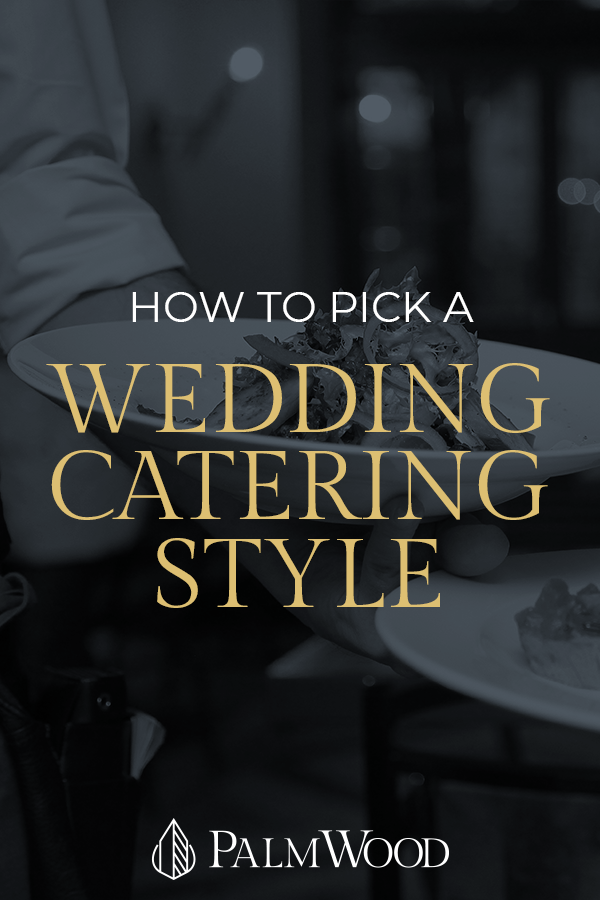Choosing the right style of catering is essential for you and your future spouse. For most couples, food is the number one expenditure in a wedding. If you approach your menu thoughtfully, it will be both delicious and a reflection of you and your partner. It is, quite possibly, the most important aspect of the wedding celebration. The wedding feast goes back as far as weddings themselves, and there is no reason you can’t make yours memorable.
There are many presentations, or styles, of food service. Each one has its own advantages, and typically just one will suit your needs. However, if one style isn’t clearly the option, consider combining two options to make the perfect feast for your celebration!
Sit Down/Plated Meals
Sit Down or Plated Meals can be served in many different ways, so be sure you understand how your caterer will do this. Here are some terms to know so you can communicate with your caterer more effectively:
American Style
Here, the meal is plated in the kitchen and served to your guests. It’s primarily efficient, and to execute well, you will want to understand the guest-to-server ratio so your guests are tended to quickly.
Russian Style
Russian service is when servers bring platters to the table and serve guests individually from the platters. This a way to offer guests different entrees or side items. It is elegant, but typically costs more than American service.
French Style
French service is also a tableside service. The server (or in some cases, the chef!) will come to each table with a cart and assemble dishes there, such as a Caesar salad, flaming Steak Diane or Cherries Jubilee. This service is dramatic and elegant, but it requires extensive staff so it can be more expensive.
Family style
This is an option for plated meals where guests help themselves to their dinner from platters served to the table. It is well-suited for long tables and creates a warm, jovial atmosphere. The service equipment and staff required may make this option less affordable.
Buffet
A typical buffet will include every course or element of a seated dinner: salad, protein, vegetables and starches. (They’re also a great way to include more food options than you may otherwise get!) Some assume a buffet is less expensive than a plated meal, but this isn’t necessarily the case; it all depends on portion size, control and the actual menu items. With this option, consider having servers serving from the buffet, and know that some guests will go back for seconds!
Food Stations
Food stations – where guests roam from station to station choosing different types of food — are a great way to bring a party to a reception! Stations create a more flexible approach to a menu and can really encompass specific items that represent you and your family. Incorporating your favorite foods in a creative way is also a bit easier with a station setup. In addition, the showmanship of the attendants can create interactions for the guests that are truly memorable.
Roaming Menus
Roaming menus include passed hors d’oeuvres and novelty items. They create movement during the reception, which builds an intriguing guest experience. Another advantage to roaming menus is that guests don’t have to stand in line, and they could also help decrease overall food costs.
Despite the differences, all of the catering styles are great options. Before choosing which style suits you, consider your guest count, budget and venue size. And, once you decide on a catering style, work through the many options with your chef or catering coordinator. Together, with their experience and your style of choice and sensibilities, you can build a personalized menu for your reception! Your guests will definitely leave saying it is “So you”!
Pin this post!

